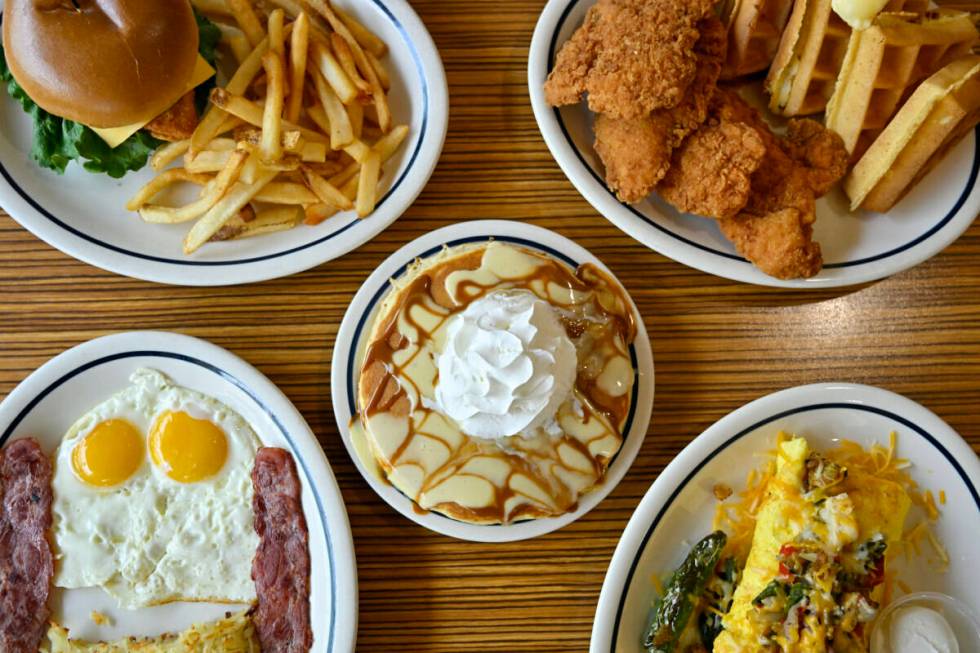Applebee’s and IHOP join forces to reverse declining sales

For a few years now, food companies in the U.S. have been combining two different food brands and putting them under one roof with a shared staff to create dual-brand restaurants.
We have all seen the Yum! Brands’ (YUM) Taco Bell-KFC or Pizza Hut-Taco Bell mashups, Inspire Brands’ Dunkin’-Baskin Robbins combo locations, and GoTo Foods’ Cinnabon-Schlotzsky’s and Auntie Anne’s-Cinnabon shops.
Don’t miss the move: SIGN UP for TheStreet’s FREE Daily newsletter
Companies tend to do these franchise combinations to kill two birds with one stone, allowing them to expand their brands while spending half the money on rent and staff.
These combination restaurants are also beneficial and efficient for consumers because they save time by only going to one location and allow them to have more food options to choose from, making agreeing on where to eat a much easier task.
Related: Taco Bell menu changes avoid troubling fast-food trend
Companies have listened to customers’ positive feedback on these food brand mashups, and now a new player has entered the game — this time, it doesn’t just involve fast-food chains.
MediaNews Group/Orange County Register via Getty Images/Getty Images
Dine Brands blames its declining revenues on two restaurant brands
Dine Brands is one of the world’s largest full-service dining companies and franchisor of iconic American brands, including Applebee’s, IHOP, and Fuzzy’s Taco Shop.
This company has kept America’s most nostalgic restaurants running for years, creating memories and putting smiles on families’ faces.
However, these beloved brands are not what they used to be, as they now lack consistency in operations, services, and food quality, which are all factors the restaurants were once praised for.
Related: Starbucks makes a major move many coffee drinkers will love
According to Dine Brands’ third-quarter earnings report for 2024, total revenues were $195 million compared to $202.6 million for last year’s third quarter, representing a nearly 4% decline. This decrease was attributed to negative comparable same-restaurant sales at Applebee’s and IHOP.
Applebee’s domestic same-restaurant sales were down nearly 6% year-over-year, and IHOP’s decreased by 2.1%.
Dine Brands’ reported earnings per share of $1.44 beat analysts’ expectations of $1.34 but declined from last year’s $1.46.
In its earnings call for the second quarter of 2024, Dine Brands alluded to considering opening an Applebee’s and IHOP restaurant combination to return the brands to profitable growth, but no updates were given until now.
Applebee’s and IHOP join forces to reverse declining sales
During its earnings call on Nov. 7, Dine Brands (DIN) announced that the first-ever Applebee’s-IHOP dual-brand restaurant in the U.S. will open near San Antonio, Texas, at the beginning of next year.
This innovative restaurant will combine both franchises into a single restaurant so customers can get breakfast for dinner or dinner for breakfast if they so desire.
The first opening of this location will serve as a test for future potential openings. It aims to reverse Applebee’s and IHOP’s declining sales by creating a more affordable business model that will help reduce operation costs and maximize profits.
Shutterstock/TheStreet
However, this is not the first Applebee’s-IHOP dual-brand restaurant when considering Dine Brands’ international business.
More Retail:
- Coca-Cola announces it’s bringing back a nostalgic beverage
- Peloton partners with NFL to target an unexpected audience
- Shein partners with a popular children’s clothing brand
Thirteen locations have already opened in the company’s international market, two new ones this year in Peru and Mexico and one in Honduras, a new market for the company.
“The restaurants have performed well, and we continue to see this portfolio achieve on average approximately 1.5 times to 2 times the revenue of a single branded restaurant. We’re pleased with the growth of the dual brands concept internationally and we’re excited about the potential of this opportunity domestically,” said Dine Brands CEO John Peyton.
Related: Veteran fund manager sees world of pain coming for stocks